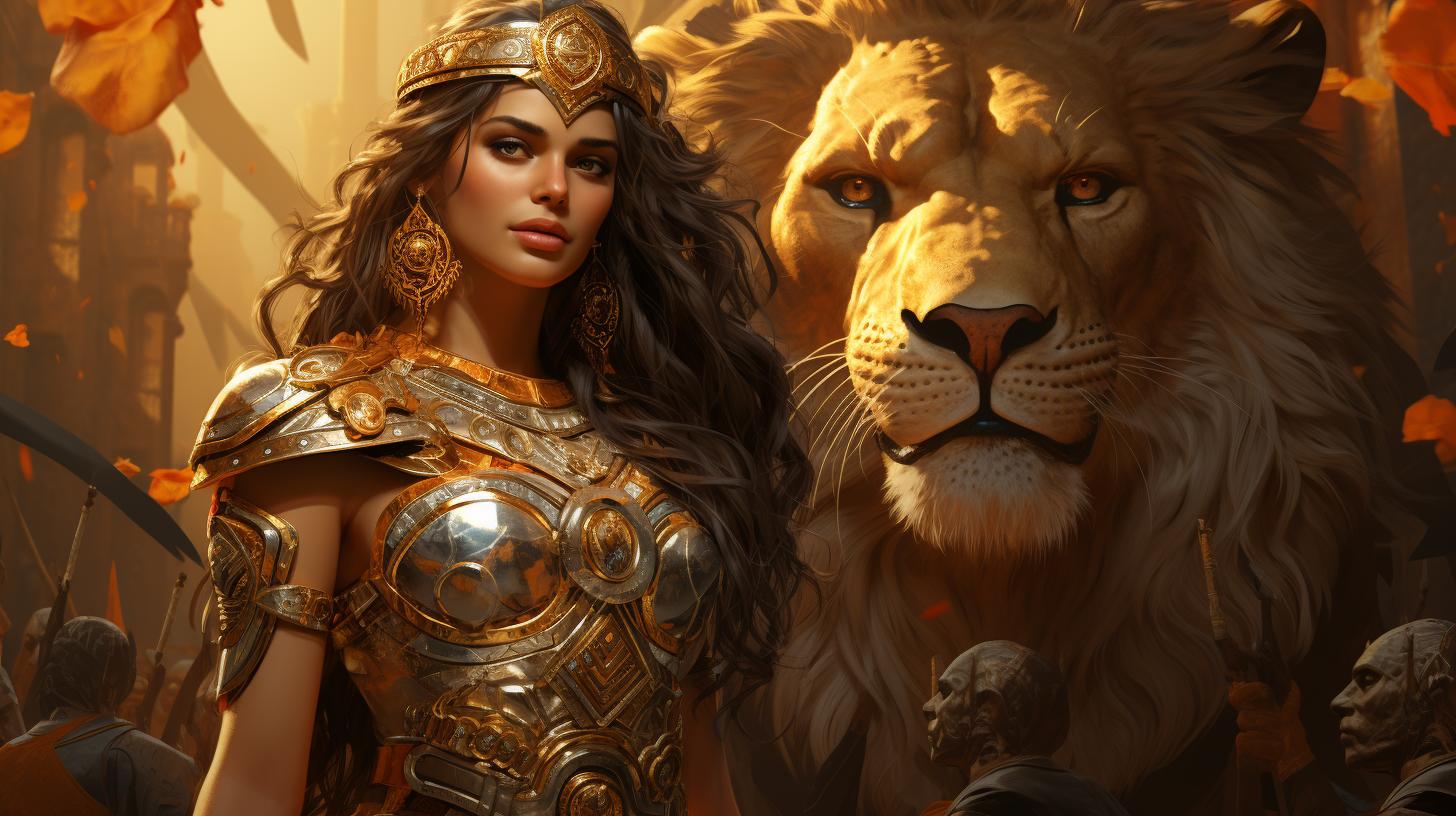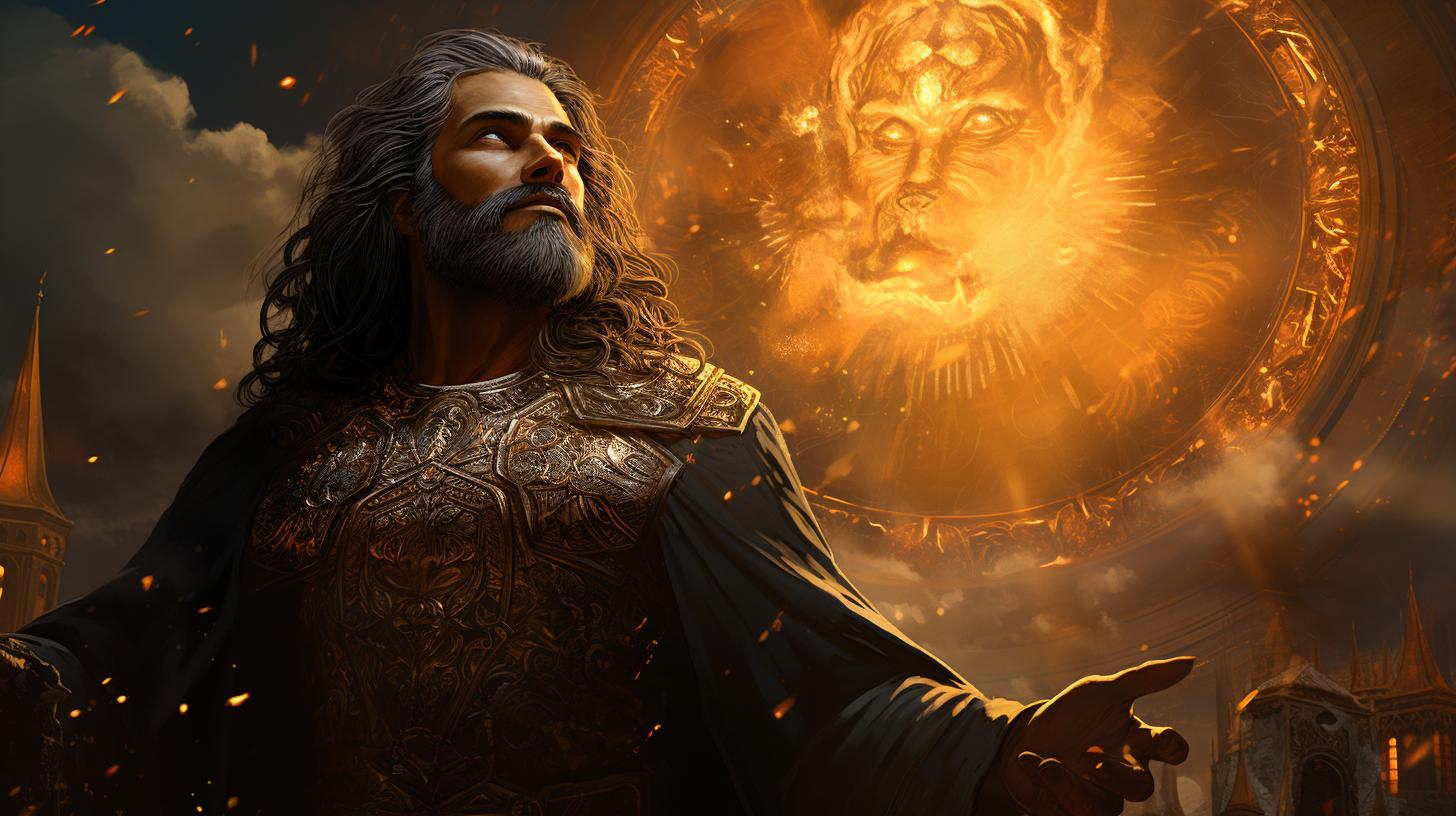Oannes God: Unveiling the Mysteries of the Babylonian Mythical Figure

Oannes god is a fascinating Babylonian mythical figure from the 4th century BC. Described as a half-human, half-fish creature, Oannes emerged from the depths of the ocean each day to impart knowledge on writing, arts, and sciences to the people alongside the Persian Gulf.
Documented by Berossus, a Babylonian priest, Oannes was considered one of the seven sages who brought civilization and enlightenment to humanity. This article delves into the origin, teachings, and impact of Oannes god, exploring its connections with other deities and its representation in art and literature.
Brief Overview of Oannes god
Oannes god is a fascinating mythological figure of ancient Babylonian origins. This enigmatic being, believed to have appeared during the 4th century BC, holds a central role in Babylonian mythology and is associated with the dissemination of knowledge and civilization among humanity.
Often depicted as a half-human, half-fish creature, Oannes god emerged from the depths of the ocean, venturing onto the shores of the Persian Gulf. His purpose was to instruct people on various subjects including language, arts, and sciences—opening their minds to the wonders of knowledge and understanding.
Although details regarding the specific teachings of Oannes god and the reactions of the people to his appearances remain elusive, the influence of this mythical figure is undeniably profound.
As one of the Apkallu, the seven wise sages of Babylonian civilization, Oannes god played a crucial role in the development of ancient Mesopotamian culture.
Through the writings of Berossus, a Babylonian priest from the 3rd century BC, we can catch a glimpse of the fascinating character that is Oannes god. However, the truth behind the legend, whether rooted in historical events or crafted to explain the mysterious origins of civilization, continues to be a topic of curiosity and investigation.
The Mythological Figure of Oannes god
Origin and Description of Oannes god
Oannes god, a Babylonian mythical figure from the 4th century BC, holds a captivating origin intertwined with divine mystery. Believed to emerge from the depths of the ocean, this enigmatic being possessed a unique physical embodiment.
Oannes was described as a fascinating blend of a human torso coupled with a fish-like tail or alternatively, a human body enveloped by the form of a fish. The accounts of Oannes’s appearance have evolved over time, capturing the essence of its symbolism and significance in Babylonian culture.
Role and Teachings of Oannes god
The purpose and teachings of Oannes god remain shrouded in enigma. As an emissary of Ea, the god associated with freshwater depths and wisdom, Oannes is believed to have imparted invaluable knowledge to humanity.
Though specific details surrounding Oannes’s teachings are scarce, it is surmised that the mythical figure enlightened the people about various aspects including the art of writing, sciences, and other disciplines. The impact of Oannes’s teachings on the evolution of civilization and the human pursuit of knowledge is a topic of intrigue and ongoing exploration.
Historical Context of Oannes god
The historical context surrounding Oannes god provides valuable insights into the ancient civilizations of Mesopotamia and Babylonia. These regions, known for their rich cultural and intellectual developments, serve as the backdrop for Oannes’ emergence and influence.
Ancient Mesopotamia and Babylonia
In ancient Mesopotamia, a region located between the Tigris and Euphrates rivers, civilizations such as Sumer, Akkad, and Babylon flourished. This land witnessed the birth of writing systems, advanced agricultural practices, and monumental architectural structures like ziggurats.
Oannes’ presence within this historical context sheds light on the cultural and religious beliefs of these civilizations.
Influence of Oannes god in Mesopotamian Culture
- Oannes played a significant role in Mesopotamian culture, particularly in the areas of knowledge dissemination and societal advancement. As one of the Apkallu, the seven sages of civilization, he was revered for his teachings and wisdom.
- His association with Ea, the god of wisdom and freshwater, further enhanced his influence in Mesopotamian society.
- Oannes’ presence served as a link between the human realm and the divine, offering guidance and enlightenment.
- The depiction of Oannes in art and literature throughout Mesopotamian history reflects the enduring impact of this mythical figure on the collective consciousness.
Understanding the historical context of Oannes god allows us to appreciate the significant role this mythical figure played in shaping the ancient cultures of Mesopotamia and Babylonia, leaving an indelible mark on their religious, intellectual, and artistic expressions.
Oannes god in Art and Literature
Oannes god, the mythical Babylonian figure, has left a lasting impact on the realms of art and literature. The representation of Oannes god has evolved over time, showcasing the artistic imagination and interpretation of this intriguing being.
Evolution of Oannes god’s Representation
From its initial description as a half-human, half-fish creature, the depiction of Oannes god has undergone transformative changes. In ancient Babylonian art, Oannes god was portrayed with a fish-like head and human legs, showcasing its unique hybrid form.
However, over the years, this representation has evolved, influencing the creation of tritons and mermaids known today.
Influence on Modern Art and Literature
Oannes god’s influence has transcended ancient Babylonian art and can be seen in various artistic and literary works. Renowned authors and artists have drawn inspiration from Oannes god, incorporating its enigmatic nature into their creations.
Notable examples include Gustave Flaubert’s ‘The Temptation of Saint Anthony’ and Odilon Redon’s illustrations depicting the temptation of Saint Anthony. Through these works, Oannes god continues to captivate and intrigue audiences, showcasing its enduring presence in modern art and literature.
As we delve further into the exploration of Oannes god, its artistic representations and its impact on various cultural aspects, we uncover more layers of this mysterious figure.
Oannes god and Other Deities
Oannes god, the Babylonian mythical figure, is closely associated with various other deities and mythological beings from the ancient Near East.
These connections shed light on the cultural and religious interplay of the time, providing insights into the significance and influence of Oannes god.
Connections with Ea, the God of Wisdom
Oannes god is believed to be an emissary of Ea, the god of freshwater and wisdom in Babylonian mythology.
This association emphasizes Oannes god’s role as a bringer of knowledge and civilization. Ea’s wisdom and influence are reflected in the teachings and guidance provided by Oannes god to humanity.
It showcases the divine connection between Oannes god and the sources of wisdom in Babylonian religion.
Links to Ancient Near Eastern Deities
Besides Ea, Oannes god also shares similarities and connections with other deities found in the ancient Near Eastern pantheon. Ancient Near Eastern cultures, such as Sumerian and Akkadian, worshipped a multitude of deities, many of whom are potentially linked to Oannes god.
Exploring these connections provides a broader understanding of Oannes god’s role and relevance in the religious and mythological context of the time.
By examining Oannes god’s connections with Ea and other deities, we gain a deeper understanding of the divine network within ancient Babylonian belief systems.
These connections offer valuable insights into the significance and influence of Oannes god as a mythical figure and his impact on the cultural and religious landscape of ancient Mesopotamia.
Insights from Berossus’ Writings
Insights from Berossus’ writings provide valuable information about Oannes god and shed light on this mythical figure’s significance in ancient Babylonian culture.
Berossus’ Account of Oannes god
Berossus, a Babylonian priest from the 3rd century BC, documented a detailed account of Oannes god in his writings. According to Berossus, Oannes was a unique being with a fish-like head and human legs known for imparting wisdom and knowledge to humanity.
[Remove the following phrase] Accompanied by a group of beings called apkallu, Oannes acted as a mediator between the divine and mortal realms, enlightening the Sumerians with various aspects of civilization.
Unraveling the Truth: Fact or Myth?
The question of whether Oannes god’s existence was factual or purely mythical remains open to interpretation. Berossus’ writings offer a glimpse into the beliefs and traditions of ancient Babylon, but the absence of additional historical evidence makes it challenging to ascertain the veracity of Oannes’ existence.
Scholars continue to explore and analyze various sources in their quest to unravel the truth behind this enigmatic figure.
In conclusion, Berossus’ writings provide crucial insights into the account of Oannes god, presenting a detailed description of this mythical being as well as raising intriguing questions about its authenticity.
However, the continued exploration of archaeological and historical sources is necessary to gain a comprehensive understanding of Oannes and its significance in ancient Mesopotamian culture.
Understanding the Significance of Oannes god
Oannes god holds immense importance in understanding the development of civilization and the acquisition of knowledge in ancient Mesopotamia.
His teachings and influence shaped the culture and intellectual growth of the people during that era.
Impact on Civilization and Knowledge
Oannes god’s impact on civilization cannot be overstated. Through his teachings, which encompassed various fields such as writing, arts, and sciences, he played a crucial role in the advancement of human understanding and the establishment of societal structure.
The knowledge imparted by Oannes god laid the foundation for the progress of ancient Mesopotamian civilization, contributing to its achievements in various domains.
Oannes god’s teachings enabled the flourishing of written communication, which allowed greater dissemination of knowledge and the development of complex societal systems.
The arts and sciences introduced by Oannes god provided inspiration and fostered innovation, leading to advancements in architecture, mathematics, and other disciplines.
Continuing Interest and Research on Oannes god
The enigmatic nature of Oannes god and the significance of his teachings have continued to intrigue scholars and researchers. His mythical persona and the knowledge he shared present an ongoing subject of study, offering valuable insights into the cultural and intellectual history of ancient civilizations.
Researchers continue to explore the extent of the influence of Oannes god, seeking a deeper understanding of the connections between Mesopotamian culture, other ancient Near Eastern deities, and the enduring impact of Oannes god in shaping human knowledge.
- The role of Oannes god in the transmission of knowledge
- The legacy of Oannes god in ancient Mesopotamian society
- The cultural implications of Oannes god’s teachings
- Exploration of Oannes god’s connection with other deities
Through ongoing research and analysis, the comprehension of Oannes god’s significance continues to evolve, shedding light on the rich tapestry of ancient heritage and the genesis of human wisdom.




















